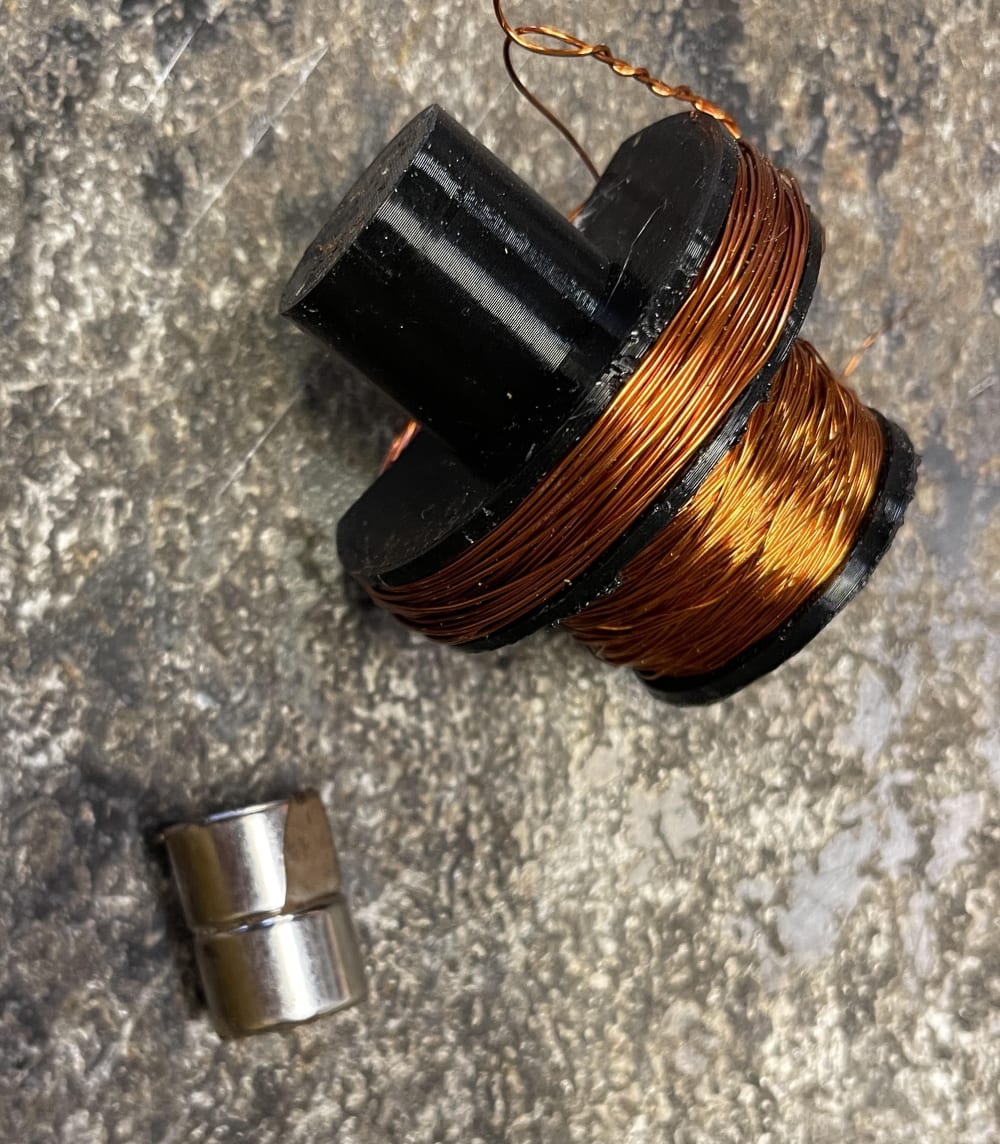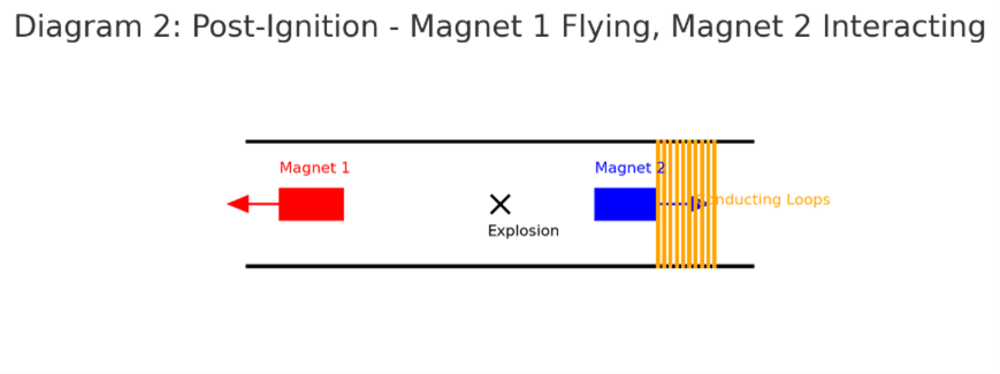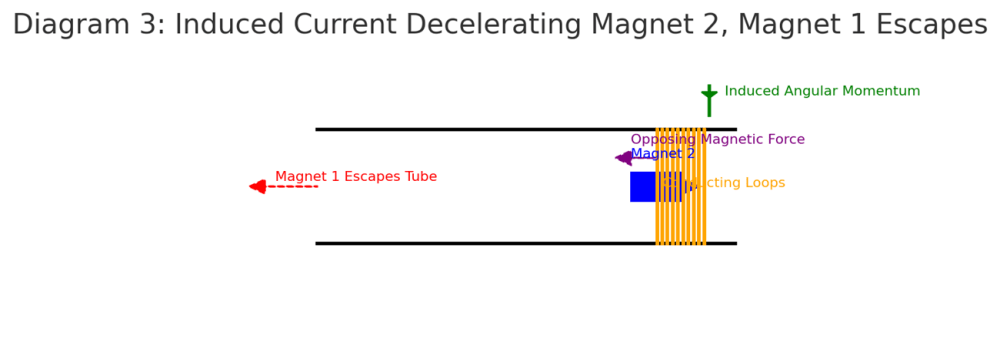The EM Sektet Thruster is a novel propellantless electromechanical propulsion system that generates net thrust by exploiting the principles of electromagnetic induction—specifically Lenz’s Law—in a way that transfers momentum internally within the system. Unlike conventional propulsion systems, which require the ejection of mass (propellant) to generate thrust in accordance with Newton’s Third Law, the EM Sektet Thruster instead manipulates electromagnetic fields and momentum transfer within a closed system to produce measurable net force.
At its core, the EM Sektet Thruster consists of two solenoids arranged along a shared axis, often with a magnetically active core, such as a ferromagnetic or crystalline material, that responds asymmetrically to rapidly changing magnetic fields. When powered by pulsed, low-voltage electricity—often under 10 watts and less than 10 volts—the system produces a repeating inductive interaction between the solenoids and the core. The interaction exploits electromagnetic feedback and dynamic field opposition to generate a force differential that is transferred via a “momentum harness”—a proprietary structure that mechanically couples the reaction force from the core to the larger housing of the system.
The underlying theory combines elements of non-reciprocal electrodynamics, dynamic magnetic field asymmetry, and temporal phase delay between electromagnetic interactions. The result is a tiny but repeatable and directional thrust that accumulates over time. Laboratory tests have demonstrated thrust values ranging from 0.5 to 10 Newtons depending on the core material, mass, and geometry, with the device weighing as little as 200 grams in its most compact form. Experiments have shown the device moving across high-friction surfaces, accelerating across low-friction planes, and pushing against floating platforms on water—clear signs that it produces externally observable momentum transfer.
One of the defining characteristics of the EM Sektet Thruster is its scalability. The same principle used in a 200-gram prototype has been applied to larger configurations, achieving thrust in the tens of Newtons range. Moreover, the power consumption remains modest, and the materials used—copper coils, ceramic magnets, and common circuit components—are all commercially available, making the technology highly accessible for rapid prototyping and deployment.
Its implications are far-reaching. In space applications, the thruster promises infinite specific impulse, as it does not require fuel, potentially enabling long-duration missions with lightweight systems. For defense and aerospace, it offers a compact, silent, and magnetically shieldable propulsion source. In marine systems, it allows non-intrusive thrust generation without propellers, enabling stealth navigation or agile movement in constrained environments.
Although controversial due to its apparent contradiction with classical interpretations of conservation laws, third-party lab verification is currently underway to validate the effect under controlled conditions, including air-bearing platforms and vacuum environments.
In short, the EM Sektet Thruster represents a potentially revolutionary advance in electromechanical propulsion—a compact, scalable, and efficient device that may redefine how we approach mobility in space, air, and sea.
Video
Like this entry?
-
About the Entrant
- Name:Ed Chen
- Type of entry:individual
- Software used for this entry:Solid Works
- Patent status:pending








